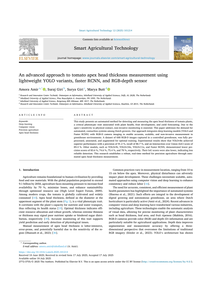In this paper we propose a head detection method using range data from a stereo camera. The method is based on a technique that has been introduced in the domain of voxel data. For application in stereo cameras, the technique is extended (1) to be applicable to stereo data, and (2) to be robust with regard to noise and variation in environmental settings. The method consists of foreground selection, head detection, and blob separation, and, to improve results in case of misdetections, incorporates a means for people tracking. It is tested in experiments with actual stereo data, gathered from three distinct real-life scenarios. Experimental results show that the proposed method performs well in terms of both precision and recall. In addition, the method was shown to perform well in highly crowded situations. From our results, we may conclude that the proposed method provides a strong basis for head detection in applications that utilise stereo cameras.
MULTIFILE

The goal of this study was to develop an automated monitoring system for the detection of pigs’ bodies, heads and tails. The aim in the first part of the study was to recognize individual pigs (in lying and standing positions) in groups and their body parts (head/ears, and tail) by using machine learning algorithms (feature pyramid network). In the second part of the study, the goal was to improve the detection of tail posture (tail straight and curled) during activity (standing/moving around) by the use of neural network analysis (YOLOv4). Our dataset (n = 583 images, 7579 pig posture) was annotated in Labelbox from 2D video recordings of groups (n = 12–15) of weaned pigs. The model recognized each individual pig’s body with a precision of 96% related to threshold intersection over union (IoU), whilst the precision for tails was 77% and for heads this was 66%, thereby already achieving human-level precision. The precision of pig detection in groups was the highest, while head and tail detection precision were lower. As the first study was relatively time-consuming, in the second part of the study, we performed a YOLOv4 neural network analysis using 30 annotated images of our dataset for detecting straight and curled tails. With this model, we were able to recognize tail postures with a high level of precision (90%)
MULTIFILE
This study presents an automated method for detecting and measuring the apex head thickness of tomato plants, a critical phenotypic trait associated with plant health, fruit development, and yield forecasting. Due to the apex's sensitivity to physical contact, non-invasive monitoring is essential. This paper addresses the demand for automated, contactless systems among Dutch growers. Our approach integrates deep learning models (YOLO and Faster RCNN) with RGB-D camera imaging to enable accurate, scalable, and non-invasive measurement in greenhouse environments. A dataset of 600 RGB-D images captured in a controlled greenhouse, was fully preprocessed, annotated, and augmented for optimal training. Experimental results show that YOLOv8n achieved superior performance with a precision of 91.2 %, recall of 86.7 %, and an Intersection over Union (IoU) score of 89.4 %. Other models, such as YOLOv9t, YOLOv10n, YOLOv11n, and Faster RCNN, demonstrated lower precision scores of 83.6 %, 74.6 %, 75.4 %, and 78 %, respectively. Their IoU scores were also lower, indicating less reliable detection. This research establishes a robust, real-time method for precision agriculture through automated apex head thickness measurement.
DOCUMENT
